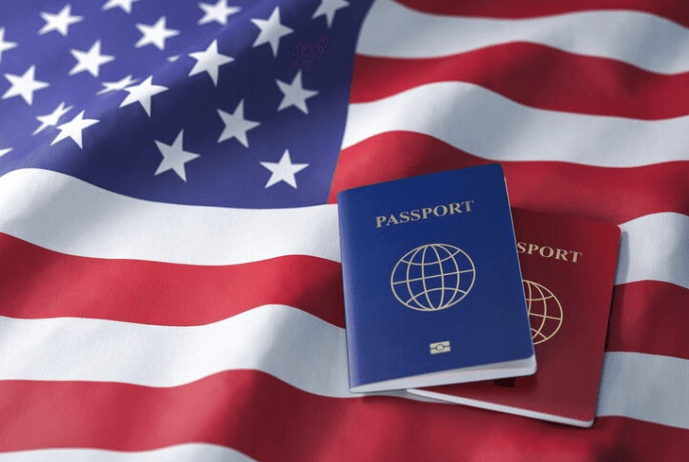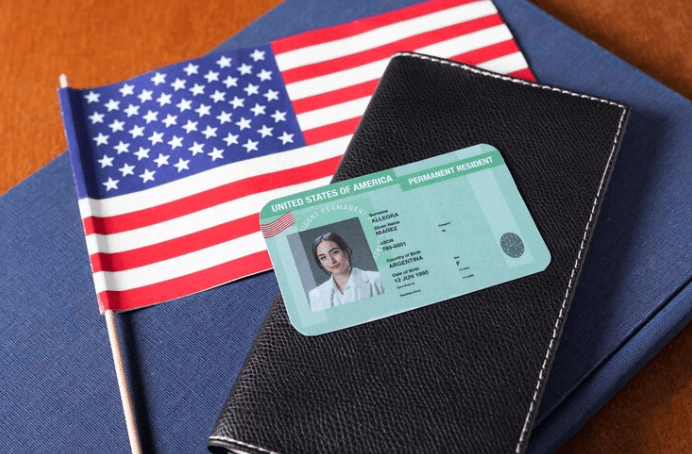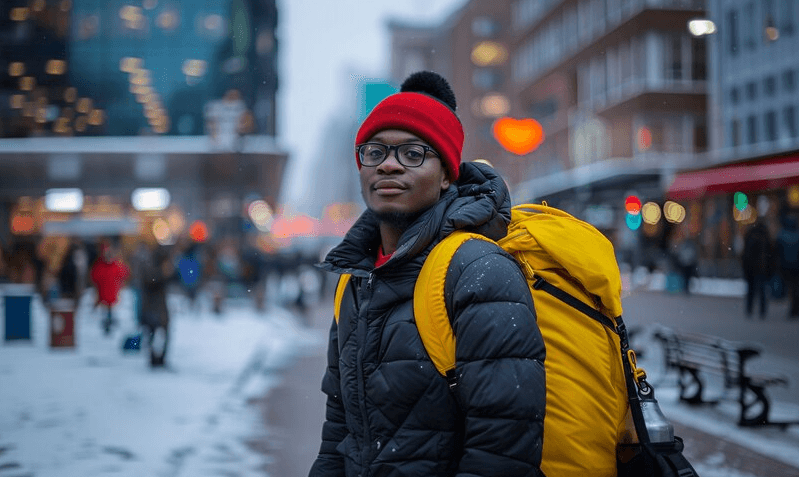The United States has long stood as a beacon of higher education, attracting students from every corner of the globe. Its diverse array of universities and colleges offers a breadth of programs, disciplines, and research opportunities unmatched anywhere in the world.
This educational richness draws hundreds of thousands of international students each year, eager to expand their horizons and engage in a unique academic environment. However, navigating the journey to study in the U.S. is not without its complexities, chief among them understanding and acquiring the appropriate student visa.
Student visas are the key to unlocking the door to U.S. education for international students. They are not just mere formalities but crucial legal documents that define the status and rights of students in the United States. There are three main types of student visas: F-1, M-1, and J-1, each tailored to different educational pursuits and needs.
The F-1 visa is the most common type, designed for those intending to engage in academic studies. Students enrolled in programs that award a degree or certificate at an accredited U.S. college, university, high school, private elementary school, seminary, conservatory, or another academic institution, including language training programs, typically require an F-1 visa.
On the other hand, the M-1 visa caters to those who plan to attend vocational or other recognized nonacademic institutions, other than language training programs in the U.S. This visa is for students who aim for practical training and skills in a specific vocational field.
The J-1 visa is slightly different, primarily aimed at individuals participating in exchange visitor programs in the U.S. This includes not only students but also scholars, teachers, interns, trainees, and even au pairs. It’s a more flexible visa, accommodating a broader range of educational and cultural exchange activities.
Eligibility for these visas depends on several factors. Firstly, prospective students must be accepted by a school certified by the Student and Exchange Visitor Program (SEVP). Post acceptance, the school provides the necessary forms – I-20 for F-1 and M-1 visas, and DS-2019 for J-1 visas – which are critical for the visa application process.
Understanding the distinctions between these visas is imperative. While they may share some similarities, each has unique requirements and is designed for specific educational paths. For instance, F-1 visa holders have more flexibility in terms of on-campus employment opportunities, while M-1 visa holders are more restricted. Similarly, J-1 visa holders are often part of specific exchange programs that may have their own set of rules and benefits.
Navigating the complexities of U.S. student visas is a crucial step in the journey of international education. It’s not just about getting a visa; it’s about choosing the right one that aligns with your educational goals and aspirations. As such, understanding these visa types and their nuances becomes not just a procedural necessity but a fundamental part of planning for a successful and enriching academic experience in the United States.
Embarking on the journey to study in the U.S. starts with a structured visa application process. Here’s a step-by-step guide to help you navigate through it:
Step 1: Apply to a U.S. School and Get Accepted
Before delving into the visa process, your first step is to apply and get accepted by a U.S. school. The importance of choosing a school approved by the Student and Exchange Visitor Program (SEVP) cannot be overstated as this is a prerequisite for obtaining a student visa. The application timeline varies, but most full-time undergraduate and graduate programs require submissions by December or January, with admissions notifications typically sent out around March or April.
Step 2: Receive Form I-20 or DS-2019 From Your School
Upon acceptance, the school will issue Form I-20 for F-1 and M-1 visa applicants or Form DS-2019 for J-1 visa applicants. These forms are critical as they confirm your eligibility for student status and contain essential information like your SEVIS ID and program details.
Step 3: Pay the I-901 SEVIS Fee
Next, you’ll need to pay the I-901 SEVIS fee, necessary for activating your status in the SEVIS system. This fee is $350 for F-1/M-1 students and $220 for J-1 students, payable online for most students except those from certain countries. Ensure you print out the confirmation page post-payment.
Step 4: Complete the Online Visa Application (Form DS-160)
The Online Nonimmigrant Visa Application, Form DS-160, is the next step. It requires information from your passport, a visa photograph, and your Form I-20 or DS-2019. Additional details like travel itinerary, academic background, and purpose of travel might also be needed. Ensure that you complete this form in English and print the confirmation page for your interview.
Step 5: Schedule Your Visa Interview
Contact the nearest U.S. embassy or consulate to schedule your visa interview, ideally the one you selected on your DS-160 form. Wait times for interviews can vary, so check these in advance.
Step 6: Pay the Visa Application Fee
A $160 application fee is required, payable before or, in some cases, on the day of your interview depending on the embassy’s policy. Ensure you have the receipt if you’re required to pay this fee beforehand.
Step 7: Attend Your Visa Interview
The visa interview is a crucial part of the process. Prepare by gathering your passport, visa photograph, DS-160 confirmation page, I-901 SEVIS fee confirmation, and the original Form I-20 or DS-2019. Additional documentation like academic transcripts, proof of funds, and intent to return post-study may also be required. The interview will assess your qualifications for the student visa.
Step 8: Pay the Visa Issuance Fee (If Required)
Depending on your nationality and reciprocal agreements with the U.S., you may be required to pay a visa issuance fee after your visa approval. Check the U.S. visa website for specific details regarding this fee.
Step 9: Receive Your Visa
After successfully completing the above steps and getting your visa approved, your passport with the U.S. student visa will be returned to you. The method of passport return can vary, with some embassies requiring in-person pickup and others sending it via mail. Visa processing times can differ, so refer to the U.S. visas website for an estimate.
This step-by-step guide is designed to streamline your visa application process, making your dream of studying in the U.S. a well-planned reality.
Navigating the student visa application process for studying in the U.S. can be smooth and successful with the right approach. Here are essential tips and insights to help you along the way:
Essential Tips for a Smooth Visa Application Process
1. Start Early: The key to a stress-free visa application is starting early. Apply for your visa as soon as you receive Form I-20 or DS-2019 from your school. This proactive approach allows ample time for processing and addressing any unforeseen issues.
2. Avoid Premature Travel Arrangements: While it’s tempting to book flights as soon as you apply for your visa, it’s advisable to wait until your visa is approved. There’s no guarantee that your application will be accepted, and premature bookings could lead to financial losses if your visa is denied.
3. Contact Your Embassy for Questions: Each U.S. embassy or consulate may have slightly different procedures for visa processing. If you have any doubts or questions about your application, directly contacting your embassy is the best way to get accurate information.
After Receiving Your Visa: Preparing for Your Journey
Understanding Visa Limitations and Compliance: Be aware of the duration of your stay and any travel restrictions. Typically, students on F or M visas cannot enter the U.S. more than 30 days before their program starts. Always comply with the terms of your visa to avoid complications.
Adjusting to Life in the U.S.: Moving to a new country can be challenging. Take advantage of resources offered by your school for cultural adaptation and integration. Engaging with local communities and other international students can ease the transition.
Working While Studying
Guidelines for Employment on a Student Visa: Generally, F-1 students are allowed to work on campus for up to 20 hours a week during the academic year and full-time during holidays and vacation periods. Off-campus employment is restricted and typically requires authorization.
Optional Practical Training (OPT) Opportunities: F-1 students are eligible for Optional Practical Training, which allows them to work in their field of study for up to 12 months after completing their academic program. Applying for OPT requires careful planning and adherence to specific guidelines.
Extending Your Stay or Changing Your Status
Procedures for Extending Your Stay or Changing Visa Status: If you wish to extend your stay or change your status (e.g., from student to employment visa), you must apply through U.S. Citizenship and Immigration Services (USCIS). This process requires thorough documentation and adherence to specific regulations. Failure to maintain your status can lead to serious consequences, including the inability to enter the U.S. in the future.
By following these guidelines and being proactive in understanding and adhering to visa regulations, you can ensure a smooth experience both during the application process and throughout your educational journey in the United States.
Navigating the U.S. student visa application process requires vigilance to avoid common pitfalls. Here’s a guide to help you steer clear of potential issues:
Avoiding Common Pitfalls
Compliance with Visa Conditions: Adhering to the terms of your student visa is crucial. This includes maintaining full-time enrollment, limiting off-campus employment, and not overstaying your visa. Non-compliance can lead to severe consequences, such as visa cancellation or denial of future visa applications.
Understanding Public School Restrictions for F Visas: F-1 visa holders should be aware that there are restrictions on attending public schools in the U.S. For example, F-1 secondary school students can only attend public high school for a maximum of 12 months, and they must reimburse the school for the full cost of education.
Conclusion
In summary, obtaining and maintaining a U.S. student visa involves a series of well-defined steps and adherence to specific regulations. From choosing an SEVP-certified school and obtaining the right forms (I-20 or DS-2019) to paying the SEVIS fee and successfully navigating the visa interview, each stage is crucial. Additionally, understanding visa restrictions and compliance requirements are key to a trouble-free educational experience in the U.S.
Final Tips and Encouragement for Prospective Students
Embarking on this journey requires diligence, but it’s a path filled with exciting opportunities and learning experiences. Stay organized, adhere to deadlines, and maintain open communication with both your chosen institution and the U.S. embassy or consulate. Remember, this process is a stepping stone towards achieving your academic and professional goals in the United States.
Additional Resources
For more detailed information and assistance, here are some valuable resources:
- U.S. Visas (travel.state.gov): Official information on visa types, policies, and application procedures.
- Study in the States (studyinthestates.dhs.gov): Detailed guidance for international students on studying and staying in the U.S.
- EducationUSA (educationusa.state.gov): Resources for international students, including advice on choosing schools and funding options.
- U.S. Citizenship and Immigration Services (uscis.gov): Information on visa extensions, status changes, and employment regulations.
- SEVP-Certified Schools (ice.gov/sevis): A list of schools authorized to enroll international students.
- U.S. Department of State’s Bureau of Educational and Cultural Affairs (eca.state.gov): Information on cultural exchanges and educational programs.
- Consular Affairs Contact (usembassy.gov): For specific queries related to visa applications and interviews.
Approach your student visa application with confidence and thorough preparation. This journey, though challenging, opens doors to a world-class education and a broad spectrum of cultural experiences in the United States.







Leave a Reply